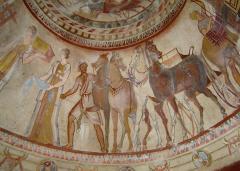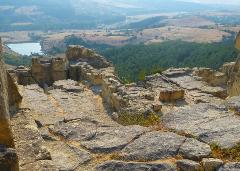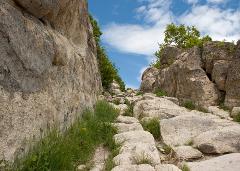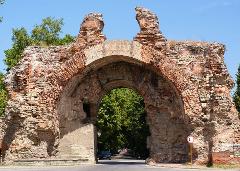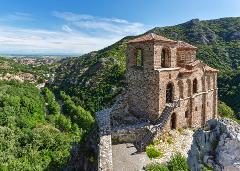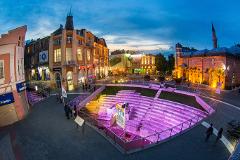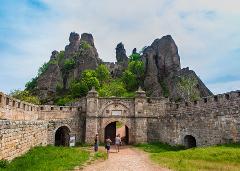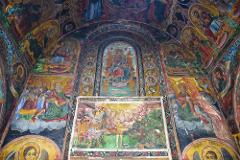The Most Mystical Places in Bulgaria
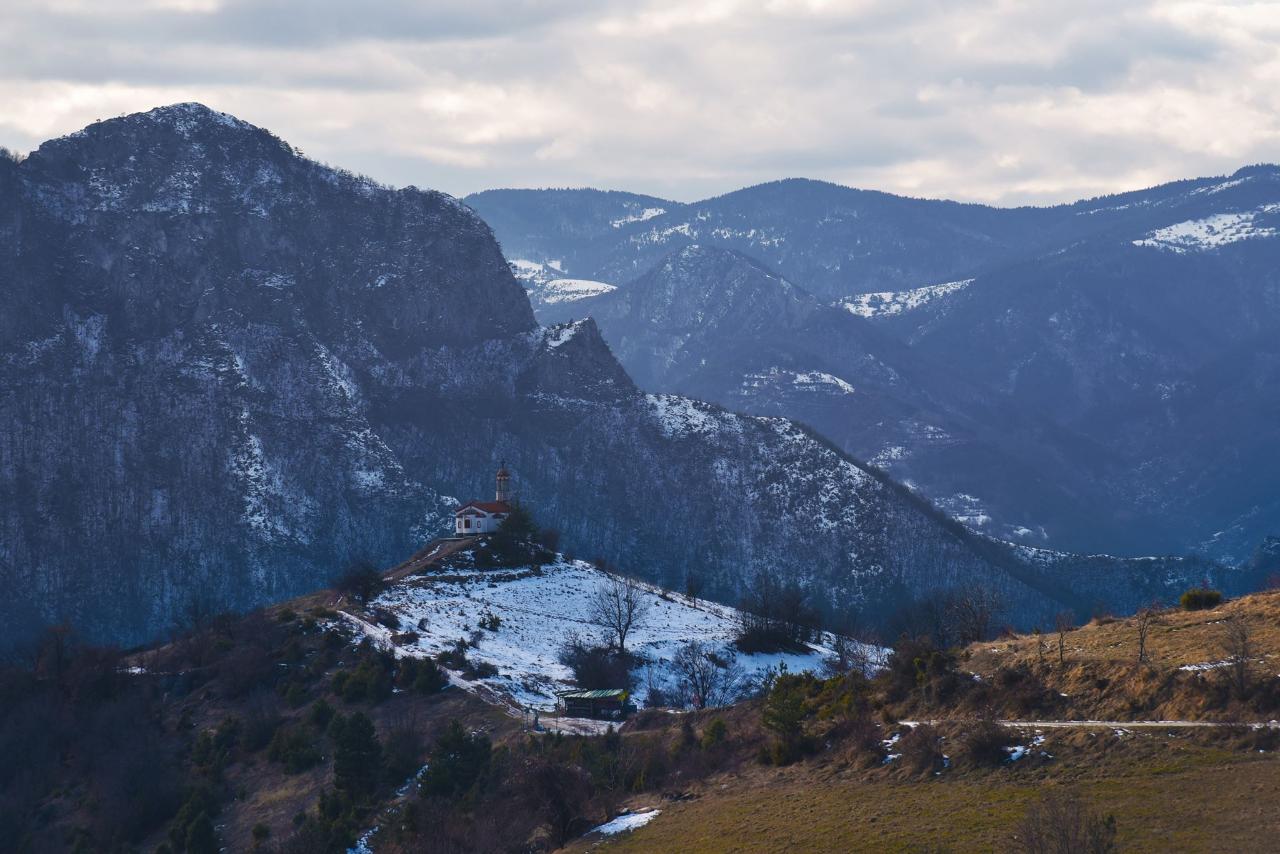
- Duration: 6 Days (approx.)
- Location: Petrich
- Product code: THEMOSTMYST
About
Legends, wonders and miracles permeate every corner of Bulgaria. Sanctuaries that have born witness to ceremonies of 8,000 years ago, pagan temples, glorious churches and monasteries, springs of healing water, and unexplained natural phenomena, all just waiting to be discovered. These holy places have seen the likes of saints, heretics, mystics and modern fortune-tellers. Our six-day tour will take you to the most magical corners of the country.
Highlights
• Visit Rupite - the home of the world-famous prophetess grandmother Vanga
• Climb up to the amazing Seven Rila Lakes
• Enter the holy stone town of Perperikon
• Explore two of the most stunning monasteries in Bulgaria - Rila and Rozhen
• Meet the secret places of the Thracians, Gnostics, the Orphans, the Bogomils, the Herons and the White Brotherhood
Description
First day
We depart from Sofia and head toward Sapareva Banya, where after a short breakfast we will board the lift to the Seven Rila Lakes - one of the most stunning mountain landmarks in the Balkans. These lakes, also called "the eyes of the mountain" draw countless tourists and followers of secret esoteric teachings. Each year in August, the followers of Beinsa Duno's White Brotherhood, who come from all over the world, conduct their annual meeting here. After getting our fill of the lakes’ breathtaking beauty, we’ll descend towards the Rila Monastery. This most celebrated monastic cloister was founded in the 10th century by the patron saint of Bulgaria - Ivan Rilski. The monastery is one of the most important cultural monuments and is included in the UNESCO World Heritage List. Optionally, the accommodation can be in the monastery itself or in a nearby hotel.
Second day
Departure to Petrich and Rupite.
Rupite has a uniquely mysterious air to it, with its peculiar relief and the hot sulfur springs. For many years the place has been home to the celebrated seer Grandma Vanga. In her youth, Vangelia was caught in a whirlwind, which robbed her of her sight but awakened her prophetic gift. During the Communist regime, tens of thousands of people sought her out for help, advice, and to learn about their future. She, with stunning accuracy, has prophesied all kinds of issues – undiagnosed diseases, missing relatives, future events. Grandmother Vanga's house in Rupite today attracts pilgrims from all over the country. Since her death in 1996, her name has spread far across the international borders - today many Russian and English media outlets freely quote her predictions about topical events such as the Syrian war.
Our next stop after Rupite is Melnik - a small picturesque town built in the architectural style of the Bulgarian Revival Period, which apart from its beautiful houses is famous for its enchanting red wine.
Third day
Visit to the medieval monastery "Nativity of the Blessed Virgin" - one of the most beautiful sanctuaries in Pirin Macedonia. After the monastery we will leave behind Pirin and Rila to take the picturesque roads at the foot of the Rhodopes.
Overnight in Plovdiv.
Fourth day
We’ll start with a visit to the Old Town – a historical and architectural reserve known for its buildings in the style of the Bulgarian Revival Period, ancient Roman and Thracian ruins, various monuments and landmarks, all perfectly illustrating the complicated history that has shaped this city into the Plovdiv of today. We’ll visit its most famous and noteworthy landmarks, including the Balabanov and Hindliyan Houses, the Plovdiv Regional Ethnographic Museum, and, of course, the crown jewel of this city – the Ancient Roman Theatre.
After the Old Town, we’ll go down to the Main Shopping Street to see the ancient Roman Stadium and its uncovered northern part, which is open to visitors.
Next is Kapana (i.e. “the Trap”) – Plovdiv’s famed art corner, made up of a labyrinth of intertwining streets lined with modern art stores, stylish little cafes, building walls colorfully painted by talented street artists and constantly changing pieces of modern art scattered around every corner.
Fifth day
Breakfast in Plovdiv and departure for the Holy Rhodope trinity - Krastova Gora, Belintash and Karadjov Rock.
On our way there, we’ll stop by Asen’s Fortress and Bachkovo monastery.
Asen's Fortress is a medieval structure built into the rocky ridge of the Rhodope mountains over the Asenitsa river. This strategic place was first the location of a Thracian fortress, later used by the Romans, the Byzantines, and eventually the Bulgarians. It was renovated in the 13th century during the reign of Tsar Ivan Asen II to be used as a line of defense against the Latin Empire. It was destroyed in 1410 by the invading Ottoman armies. Today, the fortress lies in ruins, with a small church functioning within what remains of its walls.
The “Assumption of Holy Virgin” Bachkovo monastery is the second largest in Bulgaria. The cobbled road leading up to the monastery is lined with market stalls selling trinkets, folk craft, homemade jam, honey and spices. Bachkovo Monastery was founded all the way back in the 11th century. In the cathedral, there is an icon from 1311 known as the Miracle Working Icon of the Holy Virgin. It is believed that the icon has miraculous powers.
Krastova Gora (“Crucifix Forest”) is a place where miraculous healings and other wonders happen and every year it is visited by tens of thousands of pilgrims. According to the legends, centuries ago below the mountain peak there was a monastery in which a fragment of the Holy Cross was kept. Recently, two churches and 12 chapels were built in this holy place. Belintash is a rock sanctuary located on a high peak, which ran from V-th to II-nd century BC. Nearby lies Karadzhov Kamak (“Karadzhov Rock”) where Thracian priests performed religious ceremonies and sacrifices in ancient times.
Departure and overnight in Smolyan.
Sixth day
Departure to Kardzhali and the most colorful sanctuaries of the Eastern Rhodopes. Before that, however, we will take a brief detour to the so-called Devil's Bridge, then continue on our way.
The first landmark we’ll be visiting is the so-called tomb of Orpheus near the village of Tatul. This prehistoric cult site is a pyramid-shaped sarcophagus carved on the top of a megalithic complex. Ceremonies were held here in the 5th millennium BC.
After that we head northwest to Perperikon - the largest cult complex in the Rhodope Mountains.
Located atop a tall hill in the Eastern Rhodope mountains and carved into its rocky cliffs, Perperikon is built in a place that was believed to be sacred. Archeological findings show that it was inhabited as early as the 6th millennium BC, during the Neolithic era, and it was likely used as a sanctum. Later, there lived Romans, Goths, Romans and Bulgarians until its final destruction in the 14th century. oday you can see what is left of the numerous buildings, streets, a water supply system, structures that were used for ritualistic purposes, such as a roofless oval hall that was used for divination, an altar, tubs used for winemaking, and the tombs of the rulers that were buried in the city during its golden days. Some historians believe that Perperikon is the location of the ancient Temple of Dionysius that is mentioned in numerous ancient Greek texts.
Departure to Sofia.


